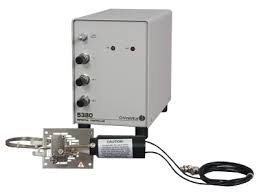XSD (Halogen Specific Detector)
The Model 5360 and Model 5360A Halogen Specific Detectors (XSD) were developed for the selective detection of halogen-containing compounds eluting from a gas chromatograph’s (GC) capillary column in the subpicogram to microgram range. The XSD installs in the standard detector port of most GC makes and models. It can be installed either as a stand-alone detector or in tandem with the Model 4430 Photoionization Detector (PID).
The 5360A XSD heated base assembly provides improved baseline stability and easy column installation. When used with the enhanced venting option, venting efficiency is nearly 100%, even in the case of a chlorinated solvent injection.
Unlike other halogen selective detectors, the XSD contains no radioactive sources and does not use organic solvents. These XSDs do not require catalyst tubes, solvents, resin cartridges, pumps, or transfer lines. Wipe testing and complicated record keeping are eliminated.
- High halogen selectivity vs. hydrocarbon simplifies analyses and minimizes or eliminates the need for sample preparation
- High detector sensitivity permits very low-level selective analysis of halogen-containing (Cl, Br, F) compounds
- Unique jet design minimizes peak tailing due to unswept dead volumes
- Requires only air to operate
- Designed to operate on most GC makes and models
- No routine maintenance required
- Enhanced venting option diverts solvent before entry to the reactor
Dynamic Range
|
>105
|
Linear Range
|
>104
|
Detectivity
|
<1 pg Cl/second
|
Selectivity
|
CI:HC >104
|
Reactor Operating Temperature
|
900-1100 ˚C in 100 ˚C increments
|
Flow Rate
|
20-30 mL/min air
|
Communications Signal Output
|
0-1 V or 1-10 V
|
Gas Requirements
|
Air 20-30 mL/min (ultrahigh purity)
|
Power Requirements
|
90-260(+/-10%) VAC, 47-63 Hz, 200W
|
Controller Dimensions
|
21.2 cm H x 12.8 cm W x 30.8 cm D (8.25” H x 5.0” W x 12.0”D)
|
Weight
|
3 kg (5.5 lb)
|
Controller
|
3.8 kg (8.4 lbs)
|
Detector
|
0.36 kg (0.8 lbs)
|
Options
|
Venting Option
|
Note: Performance is affected by several factors, including GC, column, gas flow rate, gas supply, compound class, and reactor temperature.

